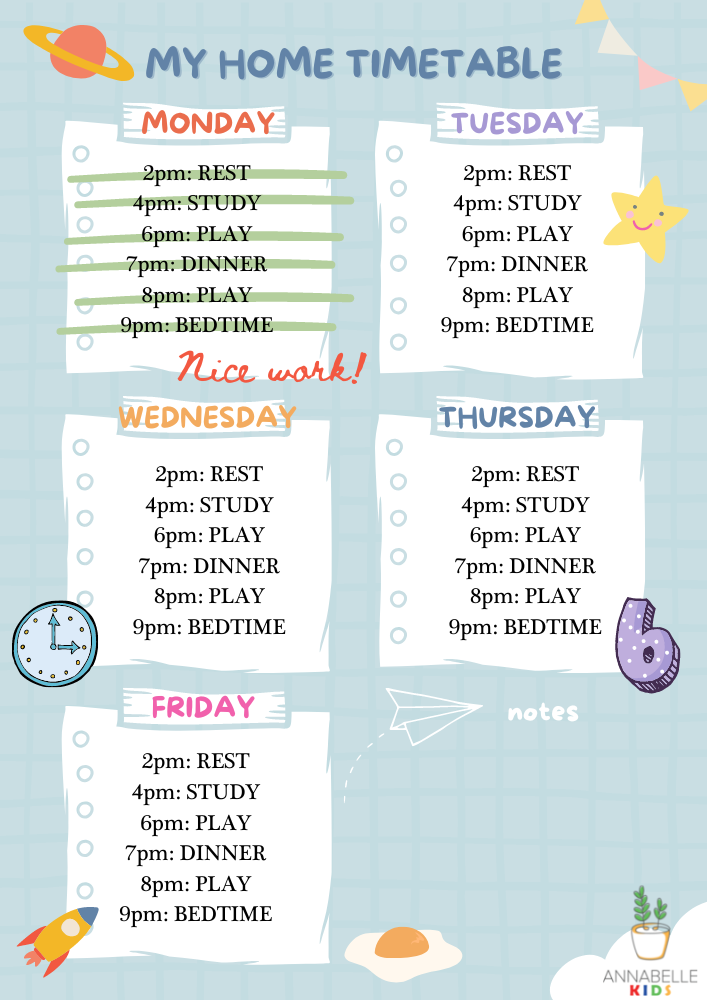6 Ways to Help Children with ADHD Study Better
Studying. Every child (and adult) will likely grapple with it for a period of time. For children with Attention Deficit/Hyperactivity Disorder (ADHD), this period seems to go on endlessly. For those who do not take medication, issues with focus and coordination tend to be heightened.
Getting children to do their work can feel like an uphill battle. As parents, we may have tried to get them to sit down to do work, only to have them run off a mere two minutes later. Or perhaps they are able to sit down, but when you come to check on their work, you find that it’s half complete or there are lots of careless mistakes inside.
It’s frustrating and sometimes, it feels like nothing is working. While most children do not like studying, those with ADHD find it nearly impossible to put their mind to something they are uninterested in.
It’s important to understand that your child is not purposefully trying to be difficult. Rather, some of their behaviour is out of their control. ADHD is a complex neurodevelopmental disorder and not the result of bad parenting on your part or purposeful disobedience on your child’s part.
With patience and understanding, there are ways to collaborate with your child and take the fight out of homework time. Here are some ways you can help your child focus on what they’re doing and learn better.
-
A common symptom of ADHD is a struggle in self-control. As much as your child may want to listen to you and just sit down and study, their lack of impulse control can make it very challenging for them. As such, having external controls (such as a structured schedule) can help them manage symptoms.
Create a routine for them, which includes study time, play time and bedtime. Determining a conducive time to schedule tasks might require additional time as every child is unique. It is also important to schedule in play time and mealtimes before setting in school tasks or co-curricular activities.
Once you have settled on the best time to do work, stick to it! Print out a schedule and put it somewhere easily accessible to them.
While your child will benefit from structure, that does not mean they like it. Make it more interactive by getting them to cross off the activity once it’s completed, and then bringing it to show you at the end of the day to get a reward (like a sticker) from you. This is known as a token economy — a positive reinforcement strategy to encourage and maintain appropriate performance and behaviour.
-
Remembering everything that we need to do is difficult until we learn to make it easy.
For your child with ADHD, being surrounded by a sea of people, sounds, and activities can be incredibly overstimulating. When this happens, they may struggle with task organisation or keeping track of what homework they need to complete.
When they are disorganised and lack a specific set of duties to complete, it might result in a difficulty to study more effectively. You can help by reminding them to write down their tasks in their handbook or in the form of a checklist. This breaks down large tasks into more manageable chunks, and they are able to track their progress at the same time.
Organisational tools are also your friend. Get fun notebooks which will make them want to write things down, and colourful folders for each subject.
If it’s possible, talk to their school teachers to stay informed about homework assignments and your child’s progress. Finding out from their respective teachers about which areas need more attention will also ensure a productive study time!
If they forget, teachers could step in to guide them in determining what homework has to be completed for the day.
-
Nobody enjoys spending hours at a time doing homework. The attention span of most children ranges from 15-20 minutes, and for those with ADHD, it’s even shorter.
Taking inspiration from the Pomodoro Technique, breaking homework time into manageable chunks might promote better concentration.
Set a visible timer (a phone, a kitchen timer, or anything that can do countdowns), and when the time is up, give them a 5-10 minute break. Having a break (and using up any excess energy) will allow them to return back to their task more refreshed.
Some children may be able to concentrate on a task for 10 minutes, while others may not. Determine your child's attention span by observing them, and arrange for breaks as appropriate.
-
There are four main styles of learning: visual, audio, reading/writing, kinesthetic. While we are often a rojak (a mix) of these styles, there is usually a predominant learning style.
Figuring out which style your child best resonates with will allow you to create more personalised study sessions (and save you a lot of frustration!). For example, if they are more of visual learners, drawing out diagrams to explain concepts would be more effective than trying to verbally explain them.
Your child might also absorb information differently depending on the subject. For example, for maths, they might be visual learners, but for science, they might need something more participative and interactive. Engaging your child in the right ways will also allow them to better understand (and retain) the information.
-
Having a dedicated area in your house to study and do homework will also help your child to stay focused. Make sure that the spot is not one that is associated with other activities (such as sleeping, eating or playing), as that might make it harder to enforce as a study spot.
For any tasks that require concentration, it is generally encouraged to minimise any distractions in your surroundings. For some of us and especially for children with ADHD, silence can be deafening. As they are unable to screen out distractions like the not-so-silent whirring of the aircon or their inner thoughts, the silence might end up disrupting their focus. In such cases, having some background noise (such as playing white noise music for them), might work better than complete silence.
On the other hand, children with noise sensitivity might find any noise to be a hindrance. Therefore as parents, you will need to spend a little time experimenting with different setups to determine what helps your child concentrate. The key is finding the right amount of noise to keep them focused, but not too much whereby they get distracted.
-
As parents, we may have expectations for our children – this is normal. However, children also have expectations for themselves. When these expectations are not met, such as when they do not perform well in school, they may lack the confidence in their abilities to study well or accomplish tasks.
As parents, you can help to spur them on by noticing their efforts. They do not necessarily need to be doing it right or getting all the answers correct. Give them genuine praise for what they are doing, and motivate them to see obstacles in a more positive light. This promotes a shift from a fixed mindset (where abilities are seen as inherent and unchangeable) to a growth mindset (where skills can be learnt and developed with time and practice). With a growth mindset, children feel a greater sense of control over their work, and are more likely to experience breakthroughs in their learning.
While studying can be a struggle for both parent and child, that doesn’t mean that it is destined to be this way forever. Remember that with the appropriate support, concentration and focus are skills that can develop and strengthen over time. While it will take (lots of) time, discipline, and trial and error, these are skills that will greatly benefit your child both in and outside school.
An example of a clear timetable!
An infographic on the different learning styles!


